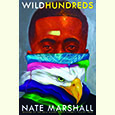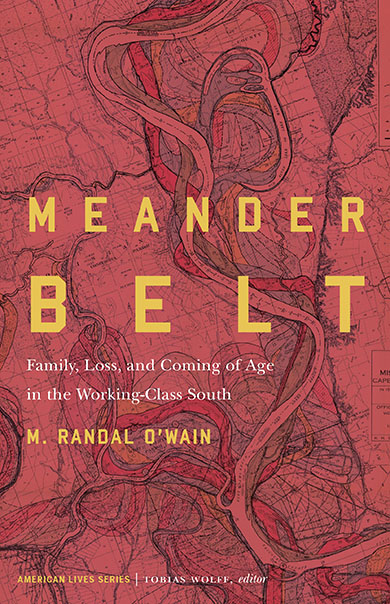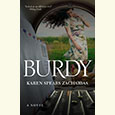Monsters and Memories
Fantasy-master Neil Gaiman presents a mythical view of childhood’s fears
“Standing in that hallway, it was all coming back to me. Memories were waiting at the edges of things, beckoning to me. Had you told me that I was seven again, I might have half-believed you, for a moment,” says the adult narrator of the new novel by fantasy-master Neil Gaiman, The Ocean at the End of the Lane. He is recalling a three-week school holiday in Sussex when he was seven years old, and the strange events that transpired—events both unforgettable and near-impossible to remember.
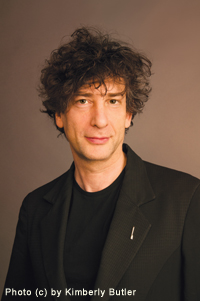 “I was not happy as a child, although from time to time I was content. I lived in books more than I lived anywhere else,” the unnamed narrator begins in the brief opening sequence that frames his recollection of this tale. As a boy he loved the Narnia books, Gilbert & Sullivan, Alice in Wonderland, and his kitten, Fluffy. He was a solitary child with no real friends, as evidenced by the complete absence of guests at his seventh birthday party. When he and his father discovered one morning that their boarder—an opal miner from South Africa—had committed suicide in the family car just down the lane, eleven-year-old Lettie Hempstock offered to bring the boy to her neighboring farm while his father met with the police. At the farm, he met Lettie’s mother, Mrs. Hempstock, and her grandmother, Old Mrs. Hempstock. All three of the Hempstocks seemed to know more than they should about the boarder’s death and many other things besides, and it soon became apparent that his suicide had set dangerous forces in motion—forces that only the Hempstocks could manage.
“I was not happy as a child, although from time to time I was content. I lived in books more than I lived anywhere else,” the unnamed narrator begins in the brief opening sequence that frames his recollection of this tale. As a boy he loved the Narnia books, Gilbert & Sullivan, Alice in Wonderland, and his kitten, Fluffy. He was a solitary child with no real friends, as evidenced by the complete absence of guests at his seventh birthday party. When he and his father discovered one morning that their boarder—an opal miner from South Africa—had committed suicide in the family car just down the lane, eleven-year-old Lettie Hempstock offered to bring the boy to her neighboring farm while his father met with the police. At the farm, he met Lettie’s mother, Mrs. Hempstock, and her grandmother, Old Mrs. Hempstock. All three of the Hempstocks seemed to know more than they should about the boarder’s death and many other things besides, and it soon became apparent that his suicide had set dangerous forces in motion—forces that only the Hempstocks could manage.
As he did previously in Coraline, Gaiman here mines the rich, rocky ground of childhood for the fears and bewilderments common to young children, to whom adults often seem all-powerful and all-knowing. “I woke myself in the darkness,” the narrator remembers, “and I knew only that a dream had scared me so badly that I had to wake up or die, and yet, try as I might, I could not remember what I had dreamed. The dream was haunting me: standing behind me, present and yet invisible, like the back of my head, simultaneously there and not there.”
Unlike most of the adults in his life—who ran the gamut from absent or distracted to murderously dangerous—the Hempstock women (for Lettie was older than she seemed) represent a trinity of nourishment, protection, and understanding within his frightening and uncertain world. For example, the food they offered at their farmhouse was the best he had ever tasted: porridge with jam, honeycomb and cream, beef and potatoes, apple pie with custard—each meal more rich and satisfying than the last. “The old lady gave me a cup of creamy milk from Bessie the cow, the fresh milk before it had gone through the cooler,” he recalls. “Nothing I had drunk had ever tasted like that before: rich and warm and perfectly happy in my mouth. I remembered that milk after I had forgotten everything else.” Within the realm of the three Hempstock women, he was safe from monsters—both the everyday adult kind and the malevolent creatures of some forgotten myth—thanks to the mysterious power the Hempstocks seemed to hold over both.
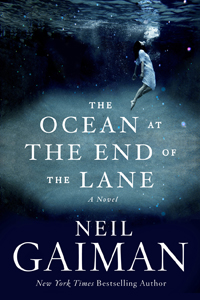 A central theme of The Ocean at the End of the Lane is the disconnect between childhood and adulthood and the struggle to form a sense of one’s own identity. “I wondered, as I wondered so often when I was that age, who I was, and what exactly was looking at the face in the mirror,” he explains. “If the face I was looking at wasn’t me, and I knew it wasn’t, because I would still be me whatever happened to my face, then what was me? And what was watching?” As a boy he distrusted and feared adults, whose physical, intellectual, and emotional advantages rendered him virtually powerless to oppose them. And yet, it was he, not the adults, who was able to see the fantastical world accessible to the Hempstocks. And it was Lettie who led him on a sort of hero’s (or heroine’s) journey to defeat the monsters and who finally helped him to see the truth about adults: “I’m going to tell you something important,” she said. “Grown-ups don’t look like grown-ups on the inside either. Outside they’re big and thoughtless and they always know what they’re doing. Inside they look just like they always have. Like they did when they were your age. The truth is, there aren’t any grown-ups. Not one, in the whole wide world.”
A central theme of The Ocean at the End of the Lane is the disconnect between childhood and adulthood and the struggle to form a sense of one’s own identity. “I wondered, as I wondered so often when I was that age, who I was, and what exactly was looking at the face in the mirror,” he explains. “If the face I was looking at wasn’t me, and I knew it wasn’t, because I would still be me whatever happened to my face, then what was me? And what was watching?” As a boy he distrusted and feared adults, whose physical, intellectual, and emotional advantages rendered him virtually powerless to oppose them. And yet, it was he, not the adults, who was able to see the fantastical world accessible to the Hempstocks. And it was Lettie who led him on a sort of hero’s (or heroine’s) journey to defeat the monsters and who finally helped him to see the truth about adults: “I’m going to tell you something important,” she said. “Grown-ups don’t look like grown-ups on the inside either. Outside they’re big and thoughtless and they always know what they’re doing. Inside they look just like they always have. Like they did when they were your age. The truth is, there aren’t any grown-ups. Not one, in the whole wide world.”
Gaiman once again taps into the power of mythology, as he did to such mesmerizing effect in American Gods and Anansi Boys, but here gives it a hint of the fairy tale spin of Stardust, producing a story of friendship and self-sacrifice that is both magical and grounded, ancient and modern. In the process, Gaiman acknowledges common childhood fears and the monsters they engender and, in one stroke, cuts them down to size. It is a delight for the child within and a cautionary tale for the grown-up without. We must not allow the forgetful haze of adulthood to blind us to the monstrous behavior of which we are capable, Gaiman suggests. In other words, we have met the monsters and, more often than not, they are us.
Neil Gaiman will read from and sign copies of The Ocean at the End of the Lane at the War Memorial Auditorium in Nashville on July 10 as part of the Salon@615
series. This will be Gaiman’s final author tour. Tickets are $30 and include a copy of the book. Click here for complete ticketing information.
